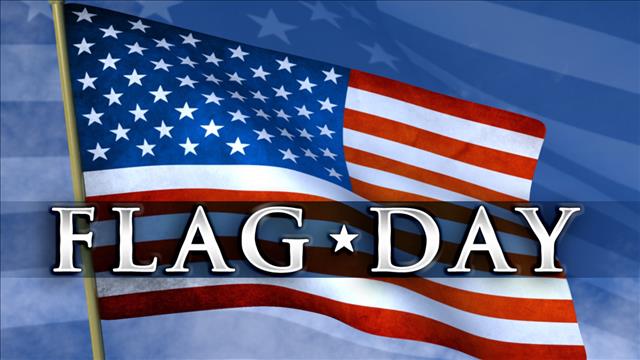
by larryw | Jun 14, 2021 | American Legion Post 178, Anniversary, Community
The first celebration of the U.S. Flag’s birthday was held in 1877 on the 100th anniversary of the Flag Resolution of 1777. However, it is believed that the first annual recognition of the flag’s birthday dates to 1885 when schoolteacher, BJ Cigrand, first organized a group of Wisconsin school children to observe June 14 – the 108th anniversary of the official adoption of The Stars and Stripes as the Flag’s Birthday.
Just a few years later the efforts of another schoolteacher, George Balch, led to the formal observance of ‘Flag Day’ on June 14 by the New York State Board of Education. Over the following years as many as 36 state and local governments began adopted the annual observance. For over 30 years Flag Day remained a state and local celebration.
In 1916, the anniversary of the Flag Resolution of 1777 became a nationally observed event by a proclamation by President Woodrow Wilson. However, it was not designated as National Flag Day until August 3rd, 1949, when an Act of Congress designated June 14th of each year as National Flag Day.
Today, Flag Day is celebrated with parades, essay contests, ceremonies, and picnics sponsored by veterans’ groups, schools, and groups like the National Flag Day foundation whose goal is to preserve the traditions, history, pride, and respect that are due the nation’s symbol, Old Glory.

by larryw | Jun 14, 2021 | American Legion Post 178, Anniversary, Army
Every year on June 14th, the United States Army celebrates its creation in 1775.
Formed from amateur troops of volunteer soldiers defending colonies against British tyranny, the oldest military force in the United States began before the U.S. formally existed. Their forces consisted of mostly inexperienced militiamen commanded by independent colonial armies.
According to resources, there were never more than 48,000 Continental soldiers at one time. Today, the United States Army consists of over one million active-duty service members and an additional 800,000 National Guard and Reserves members. It is the largest branch in the U.S. military.
The enduring history of the U.S. Army means it has been integral to many of the United States military, peace-keeping, and humanitarian efforts. It has operated or helped to facilitate humanitarian operations in many other countries and provided civil engineering and modernization projects in nations that need certain types of infrastructure.
The evolution of the U.S. Army also has included changes in the demographics of those who serve; from an exclusively male active-duty force to a diverse and multicultural force that is far more representative of the American population than in previous decades.

by larryw | Jun 13, 2021 | American Legion Post 178, Community
National Flag Week is an offshoot of Flag Day. It is a week-long observance celebrating the creation of the United States Flag. Its’ longevity grew naturally out of the one-day observance that had its’ origins as far back as the 100th anniversary of the creation of the Stars and Stripes.
National Flag Day occurs every year during the week of June 14th, the date the United States Flag was created. The week of June 14 is designated as “National Flag Week” which will be June 13–19, 2021.
Technically, Flag Day occurred before Flag Week, albeit in an unofficial way-this holiday was observed informally and/or by state/local governments long before it became a national observance. In 1949 President Harry Truman approved both Flag Day and National Flag Week. This started as a joint resolution in Congress, later approved by the president on August 3, 1949.
National Flag Week is not technically a “standing holiday” the way Labor Day, President’s Day or Memorial Day holidays are set in stone. Instead, each sitting President is responsible for making a proclamation declaring the week of June 14 as the official observance of the holiday.
Celebrating National Flag Week is as easy as properly hoisting and displaying the flag at your home or place of business. Be sure to fly yours.

by larryw | Jun 12, 2021 | American Legion Post 178, Anniversary
According to the Department of Veterans Affairs, in 2019 Texas had roughly 181,000 women veterans. This is the largest number of women veterans of any state. During the 85th legislative session in Texas, State Representative Victoria Neave filed House Bill 2698 to designate June 12 each year thereafter as Women Veterans Day, a day to recognize and honor women veterans throughout the state.
The content of this bill was later attached as an amendment to Senate Bill 805 and was signed into law by Governor Greg Abbott on June 9, 2017. When asked about her role in the creation of this legislation, Representative Victoria cited VA statistics as her motivation to create House Bill 2698.
On June 12, 2018, Representative Neave, together with the Veterans Women’s Enterprise Center, hosted the first official Women Veterans Day in Texas. Commemorative events and ceremonies were held in Dallas, San Antonio, Houston, and Austin, as well as several other cities throughout the state. These events were designed to raise awareness of the contributions made by women during their service in the U.S. military.
Post 178 is notably proud of its 35 members who are women veterans.

by larryw | Jun 6, 2021 | American Legion Post 178, Anniversary
June marks the 77th Anniversary of D-Day in Normandy. We will always remember and never forget the sacrifices and valor exhibited by our armed forces on June 6, 1944.
On D-Day Allied forces launched a combined naval, air and land assault on Nazi-occupied France. The invasion is significant in history for the role it played in World War II. During World War II (1939-1945), the Battle of Normandy, which lasted from June 1944 to August 1944, resulted in the Allied liberation of Western Europe from Nazi Germany’s control. Codenamed Operation Overlord, the battle began when some 5,000 ships, 11,000 airplanes, and 156,000 American, British, and Canadian servicemen landed on five beaches along a 50-mile stretch of the heavily fortified coast of France’s Normandy region. When it was over, the Allied Forces had suffered nearly 10,000 casualties; more than 4,000 were dead. Yet somehow, due to planning and preparation, and due to the valor, fidelity, and sacrifice of the Allied Forces, Fortress Europe had been breached.
The invasion was one of the largest amphibious military assaults in history and required extensive planning. Prior to D-Day, the Allies conducted a large-scale deception campaign designed to mislead the Germans about the intended invasion target. By late August 1944, all northern France had been liberated, and by the following spring the Allies had defeated the Germans. The Normandy landings have been called the beginning of the end of war in Europe.

by larryw | Jun 4, 2021 | Health
Three conditions will be added to the list of those presumptively associated with exposure to Agent Orange. Those conditions are bladder cancer, hypothyroidism, and Parkinsonism.
Vietnam War era Veterans and their survivors, who previously filed and were denied benefits for one of these three new presumptive conditions, will have their cases automatically reviewed without the need to refile a claim. To learn more, go to https://blogs.va.gov/VAntage/89496/breaking-news-va-plans-expansion-benefits-disability-claims-conditions-related-certain-toxic-exposures/






